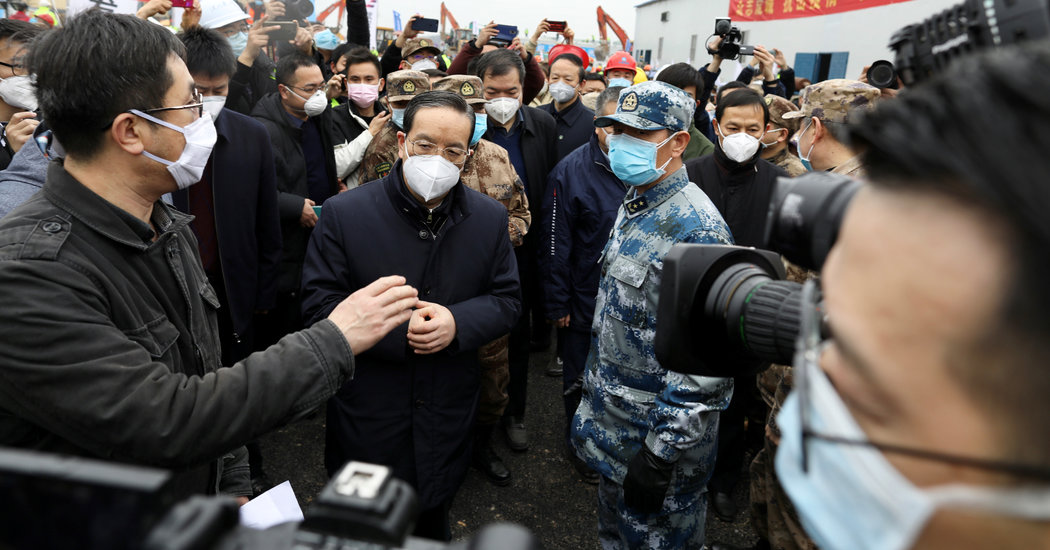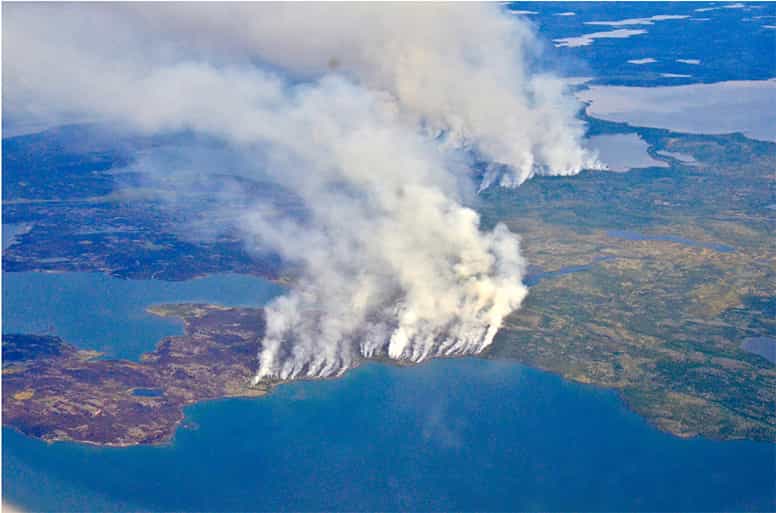The number of deaths in Hubei Province more than doubled the prior daily record, while the number of new cases soared by 14,840 to a total of 48,206 cases.
Right Now
China replaces Communist Party chief at center of outbreak with the mayor of Shanghai.
Image

Communist Party ousts provincial leader at the center of the outbreak.
China’s ruling Communist Party fired the leaders of the province and the city at the center of the new coronavirus outbreak on Thursday amid widespread public anger over the handling of the epidemic.
Jiang Chaoliang, the party secretary of Hubei Province, is the highest-ranking official to lose his job over the handling of the coronavirus outbreak, which has killed more than 1,100 people in recent weeks.
After the outbreak first emerged in Wuhan the leadership came under intense scrutiny for playing down the virus and delaying reports of its spread. The province then took drastic measures that included imposing a lockdown not only on Wuhan but also on tens of millions of people in surrounding areas.
For hospitals in Wuhan, already overwhelmed with patients, that cordon worsened a shortage of medical supplies that has continued.
Mr. Jiang will be replaced by Ying Yong, the mayor of Shanghai. The selection of Mr. Ying may underline the continued political control of Xi Jinping, China’s top leader. Before being transferred to Shanghai in a fairly senior role in 2008, Mr. Ying had come up through the political ranks in Zhejiang Province, which is Mr. Xi’s political base as well.
The party also ousted Ma Guoqiang, the top official in Wuhan, the capital of Hubei Province, and replaced him with Wang Zhonglin, formerly the party secretary of the eastern city of Jinan.
Number of cases in Hubei Province soar to nearly 50,000 as new diagnostic methods are employed.
The number of people confirmed to have the coronavirus in Hubei Province, the center of the outbreak, skyrocketed by 14,840 cases to 48,206, the government said on Thursday, setting a new daily record, after the authorities changed the diagnostic criteria for counting new cases.
The number of deaths in the province on Wednesday jumped by 242 to a total of 1,310, more than doubling the previous daily record of 103 set on Monday.
The sudden uptick is a result of the government including cases diagnosed in clinical settings, including with the use of CT scans, along with those confirmed with specialized testing kits.
Health experts said the change in reporting is meant to provide a more accurate view of the transmissibility of the virus. The new criteria is intended to give doctors broader discretion to diagnose patients, and more crucially, isolate patients to quickly treat them.
Previously, infections were confirmed only with a positive result from a nucleic acid test. But a government expert said the tests were only about 30 to 40 percent accurate. There is also a shortage of testing kits in the provinces and the turnaround time for the results of these tests takes at least two days.
Because hospitals were overstretched and lacked testing kits, many infected patients were told to go home rather than be isolated and undergo treatment.
The sudden change in the accounting has caused epidemiologists to warn that the true picture of the epidemic is muddled. Accurately tracking cases tells experts the number, location and speed at which new infections are occurring.
Many patients, displaying symptoms of the coronavirus, have long complained that they have had to wait days, and even weeks, to be tested and receive treatment. Others, including the recently deceased whistleblower Dr. Li Wenliang, said they had to be tested four or five times before the tests showed a positive result.
The huge jump in new cases puts extra pressure on the government to treat thousands of patients, many of whom are in mass quarantine centers or in isolation facilities.
Japan says it will let some people off a quarantined cruise ship, as cases rise to 218.
As Japan announced 44 new coronavirus cases on a cruise ship quarantined in the waters off Yokohama, bringing the total to 218, the country’s health minister said on Thursday that the authorities would begin allowing some passengers to disembark and serve out the remainder of the quarantine period on shore.
The minister, Katsunobu Kato, said that, if they first test negative for the virus, passengers 80 or older who have existing medical conditions or were assigned to cabins without windows or balconies would be taken to facilities for confinement until the quarantine is scheduled to end on Feb. 19. Those who test positive will be taken to hospitals.
Video
transcript
transcript
Cruise Ship Passengers Describe Life at Sea Amid Coronavirus Outbreak
Passengers aboard the Diamond Princess and Westerdam cruise ships shared their stories about how they’re handling the coronavirus outbreak.
-
“We don’t know what’s going on. We’ve been floating around for about two weeks now. There’s very little hope. As each time we hope or make plans, it’s squashed and rejected. You know, we’re all a bunch of human beings on this ship that have lives outside of this cruise ship that need us. As you can see, there are stations that allow you to disinfect your hands, which if you don’t do it with the machine the person will make sure that you get your hands clean on our ship. This is the crow’s nest where you can work the puzzle … not too much going on here.” “I mean, the conditions are very good. They’re looking after us very well. But obviously, we are confined to our cabin, and it’s getting harder. You know, we’re now into the second week, and it seems an eternity.”

Of the newly confirmed cases, Mr. Kato said, 43 were passengers and one was a crew member.
The cruise ship, the Diamond Princess, arrived in Yokohama on Feb. 3, and passengers were expecting to go home the next day. But after learning that a man who got off the ship in Hong Kong had tested positive for the coronavirus, the Japanese government quarantined all 3,700 passengers and crew members on board. The quarantine period is scheduled to last for two weeks.
Separately, the Cambodian government said on Wednesday it would allow another cruise ship, the Westerdam, to dock in Sihanoukville. The ship had been denied permission to stop in Japan, Guam, Taiwan and the Philippines, despite having no diagnoses of coronavirus.
Parade of workers sprays disinfectant across Wuhan, but experts questions its effectiveness.
Mist cannons and water sprinkler trucks have been deployed to clean the streets of Wuhan, China, but experts said the effectiveness of such measures may be limited in preventing the spread of the illness.
Since Sunday, workers in Wuhan have been sanitizing public areas twice a day in an effort to disinfect the city. Public toilets as well as garbage disposal sites and transfer stations are sprayed at 10 a.m. and 4 p.m., according to the local government’s official Weibo page, China’s Twitter-like platform. Workers will spray disinfectant onto the main roads, hospitals and around various isolation quarters as well, it added.
Video footage shared by Chinese state media showed parades of trucks and workers in protective suits spraying large, white plumes of mist into the air and onto the streets of Wuhan. The city government said that by Tuesday a total of 21,130 liters of disinfectant and 720 liters of toilet cleaning products had already been used.
“I think it could help to reduce environmental contamination with coronavirus, but we have not yet seen evidence that coronavirus has been spreading through the environment,” said Benjamin Cowling, a professor at the School of Public Health at the University of Hong Kong.
“Our current understanding is that most transmission occurs via prolonged close contact with infected persons,” he added.
Reporting and research was contributed by Gillian Wong, Chris Buckley, Sui-Lee Wee, Steven Lee Myers, Keith Bradsher, Amber Wang, Zoe Mou, Albee Zhang, Yiwei Wang, Claire Fu, Amy Qin, Elaine Yu, Tariro Mzezewa and Niraj Chokski.








